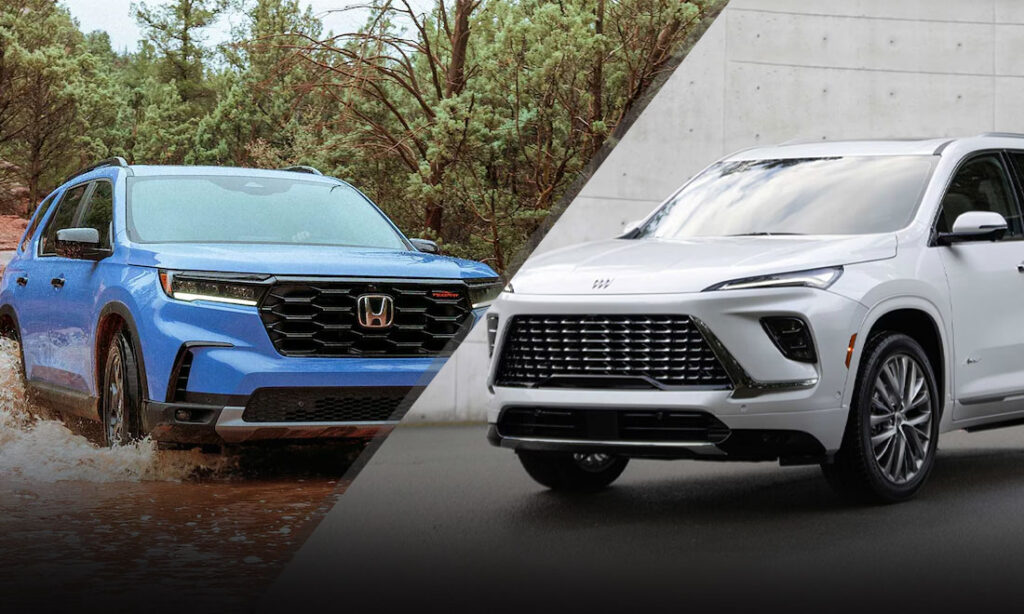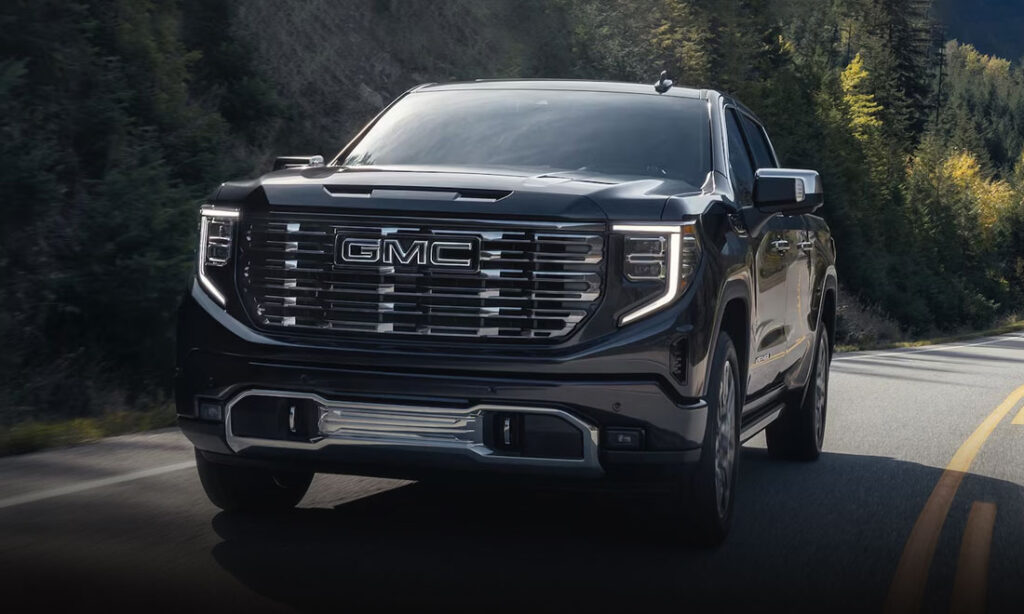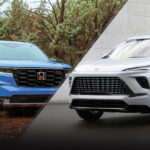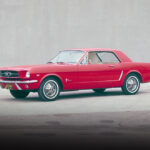Hyundai Tucson vs Kia Sportage
The Hyundai Tucson and Kia Sportage same the same basic architecture. So, which of these impressive crossovers is the better buy?
Sibling Rivalry
Platform siblings always make an interesting comparison. The major question being: are the vehicles different enough to distinguish themselves? In the case of the Hyundai Tucson and Kia Sportage, their mechanical similarities contrast with unique visual identities and minor differences of detail. Both deliver a better-than-average take on the basic compact crossover, making respectable showings against the likes of the Toyota RAV4 and Mazda CX-5. The Sportage and Tucson offer your choice of powertrains: gas, hybrid, or plug-in hybrid as well as pleasant on-road demeanors and stylish, roomy interiors.
But which is the better buy, the Tucson or the Sportage? Let’s dig into the details to find out.
Specs

The Hyundai Tucson offers three distinct powertrains. The base, gas-powered option is a 2.5L naturally-aspirated four-cylinder engine making 187 horsepower and 178 lb.-ft. of torque. It comes paired with an eight-speed automatic, a rarity in these days of the CVT, can be optioned with all-wheel drive, and gets 23-25 city and 29-32 highway mpg.
The Tucson can also be had with a hybrid powertrain, this time a 1.6L turbo four-cylinder working in tandem with an electric motor for 226 horsepower and 38 combined mpg (AWD is optional here too). A plug-in hybrid (PHEV) version uses the same set up with a larger battery for 261 horsepower and an electric-only range of 33 miles before the gas motor kicks in. The PHEV Tucson comes with all-wheel drive as standard, a six-speed automatic transmission, and gets up to 80 MPGe (miles per gallon electric equivalent).
As it shares the same platform and drivetrain, the Kia Sportage comes with the same 2.5L base engine, hybrid, and PHEV options.
Driving & Performance
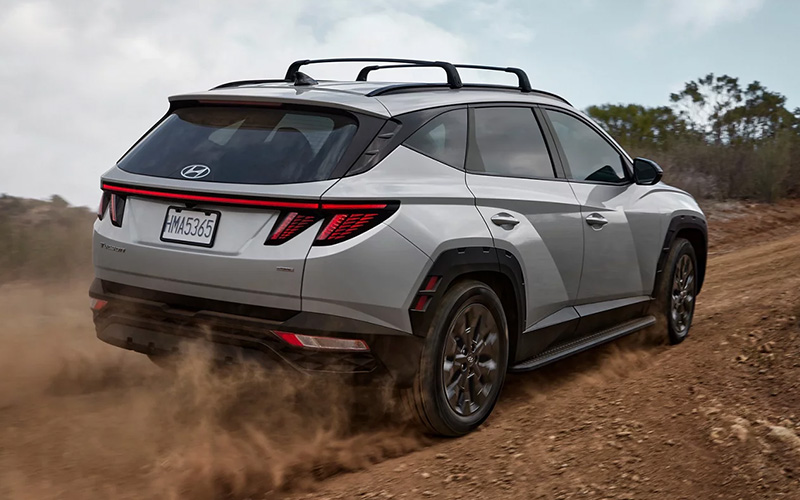
The Hyundai Tucson and Kia Sportage are also similar in their on-road manners. Their suspensions are tuned for comfort, allowing for a ride that is as smooth and comfortable as many luxury equivalents and a cut above similarly priced rivals. With that said, the gas-powered versions are slower than average, and it takes one of the two hybrid options to get any real pop from the throttle. Driving dynamics are about average for the segment, paling in comparison to the playful Mazda CX-5. AWD versions are capable of handling a dirt road or snowy day but are not as intrepid as the Subaru Forester, especially when the latter is in Wilderness trim. In the end, both the Kia Sportage and Hyundai Tucson offer decent if unremarkable driving experiences that for most compact crossover shoppers will be just fine.
Comfort & Interior
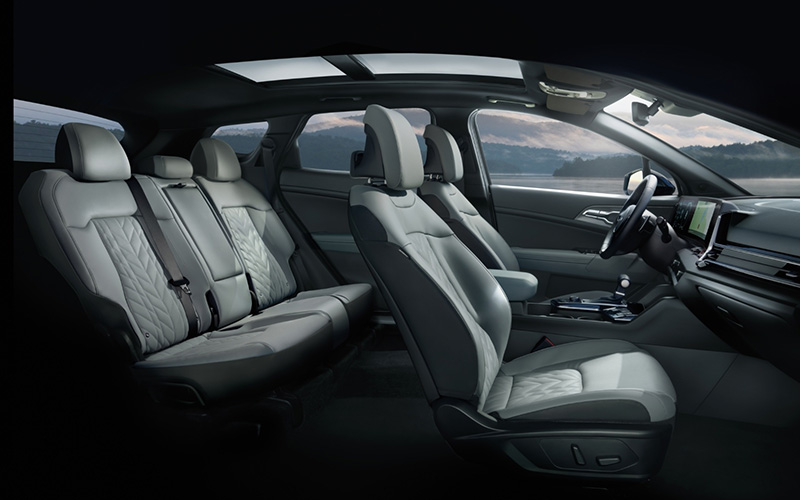
The Hyundai Tucson and Kia Sportage begin to separate once we look inside their cabins.
The seats in the Tucson and Sportage are a pleasant balance of supportive and forgiving, perfect for long highway drives. Material quality in the Tucson is a cut above the competition and on par with segment leaders like the Mazda CX-5. The layout of the Tucson is logical and functional without sacrificing aesthetics to get there. One demerit, however, is Hyundai’s choice to use touch capacitive dash controls, eschewing traditional buttons and dials. We prefer buttons, thanks. The Tucson is among the segment’s most generous when it comes to interior space. Rear seat legroom stretches to 41.3 inches while cargo space measures 38.7 cu.-ft. behind the second row and 80.3 cu.-ft. with it folded down. The hybrid and PHEV battery packs cut into cargo 74.5 cu.-ft. and 66.3 cu.-ft., respectively.
The Kia Sportage offers a similarly high-quality interior that’s just as roomy as the Tucson’s, albeit with an aesthetic all its own. Notably, Kia has implemented a novel compromise on its dash controls. The pair of dials offered can toggle between being used for the HVAC system and the stereo, which, while nice to have, still take some getting used to.
Both start with the same eight-inch touchscreen, but the Sportage’s optional 12.3-inch touchscreen upgrade is bigger than the Tucson’s 10.25-inch touchscreen, and same is true of the optional digital gauge display, if such things move the dial for you.
Trims & Features

The Hyundai Tucson and Kia Sportage offer similar trims and options, but there are a few deviations that might end up mattering for some buyers. First among these involves the pricing of the all-wheel drive option. For an AWD version of the Sportage, not otherwise equipped as standard, Kia charges an additional $1,800. Hyundai charges an additional $1,500 for AWD on the Tucson.
The Tucson’s trim line starts with the LE at $27,500 which comes with basics like cloth upholstery and an eight-inch touchscreen. The top gas-powered trim is the Limited at $38,260 and gets all the bells, whistles, etc. with features like a Bose premium stereo, adaptive cruise control with lane centering (Hyundai/Kia’s system is impressive), blind spot camera, and heated rear seats. Hyundai offers four trims for the hybrid, topping off with the Hybrid Limited at $39,465 and coming equipped with a 10.25-inch touchscreen, heated steering wheel, and front and rear parking sensors. The top range PHEV version, the Limited, is the most expensive Tucson you can buy at $45,200 and comes packed with goodies like LED ambient interior lighting and ventilated front seats.
The Sportage starts with the LX trim at $27,090 and like the Tucson gets an eight-inch touchscreen and basic driver assists systems like adaptive cruise control. The top trim for the gas-powered Sportage is the X-Pro Prestige at $37,990 tricked out with AWD, a 12.3-inch touchscreen, panoramic sunroof, and Harmon Kardon premium stereo. The top Hybrid Sportage is the EX Prestige trim at $37,190 with heated and ventilated front seats and ambient interior lighting among its amenities. The top PHEV version, the X-Line Prestige, is offered at $43,990 and adds the high-end Harmon Kardon stereo and a 12.3-inch digital gauge cluster, among other features.
The Verdict

The Hyundai Tucson and Kia Sportage, with their shared underpinnings, are almost a horse apiece. However, the Kia Sportage gets our endorsement based on a few, perhaps minor, factors. First, the Sportage offers the cheaper plug-in hybrid by $1,200 dollars. That’s more than the gap in all-wheel drive, where the Hyundai Tucson has a $300 advantage. You’ll have to weigh for yourself which matters to you more.
Next, the dash controls. Both the Tucson and Sportage interiors have more piano black plastic than is prudent, but only one, the Tucson makes matters worse by deleting buttons in favor of capacitive touch controls. Giving drivers haptic feedback is better than not, but when it comes to distracting drivers, it’s a far cry from the ease-of-use traditional buttons offer. Still, if the Sportage’s compromise of dual-use dials doesn’t flip your switch, you may want to look elsewhere, like the Toyota RAV4 for instance.
And finally, there’s the looks. We don’t usually venture into the subjective realm of aesthetics when evaluating and comparing vehicles, but the Sportage and Tucson offer a pronounced contrast that’s worth commenting on. To wit: the Tucson might be either be “super futuristic” with its origami style body panel folds and aggressive-looking latticed grille or that grille looks like a cheese grater and the body panels look like your Tucson has spent too much time in the far reaches of a Costco parking lot, taking hits from errant shopping cars. Meanwhile, the Kia Sportage has jazzy boomerang headlights and curves that look like curves rather than dents. To my eyes, the more conventional Kia wins hands down, but to each their own. For a better-looking Hyundai, consider the Ioniq 5, where radical design choices work in its favor.


